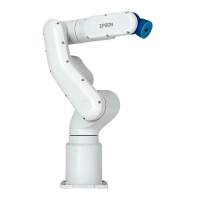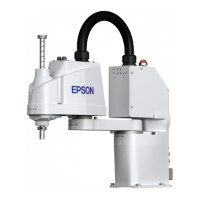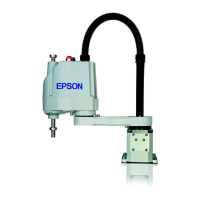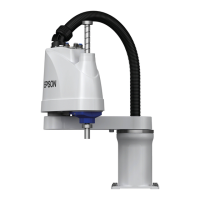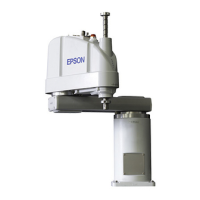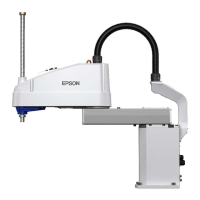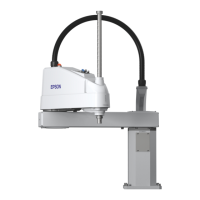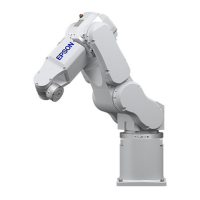C4 Maintenance 16. Calibration
C Series Maintenance Manual Rev.2 163
16. Calibration
16.1. Overview
After parts have been replaced (motors, reduction gear units, timing belts, etc.), the
Manipulator cannot perform positioning properly because a gap exists between the origin
stored in each motor encoder and its corresponding origin stored in the Controller.
Therefore, it is necessary to match these origins after replacing the parts.
The process of aligning the two origins is called “Calibration”. Note that calibration is not
the same as teaching*.
* “Teaching” means to teach the Controller coordinate points (including poses) anywhere
in the operating area of the Manipulator.
WARNING
■
To ensure safety, a safeguard must be installed for the robot system.
For details
on the safeguard, refer to the
Installation and Design Precautions in the Safety
EPSON RC+ User’s Guide.
Before operating the robot system, make sure that no one is inside the
safeguarded area.
The robot system can be operated in the mode for teaching
even when someone is inside the safeguarded area.
The motion of the
Manipulator is always in restricted (low speeds and low power) sta
tus to secure
the safety of an operator.
However, operating the robot system while someone
is inside the safeguarded area is extremely hazardous and may result in serious
safety problems in case that the Manipulator moves unexpectedly.
In EPSON RC+, a coordinate point including the arm pose is defined as “point” and its data
is called “point data”.
There are two methods to move the Manipulator during calibration.
- Releasing the electromagnetic brake and moving the arms manually.
For details, refer to the C Series Manual C4 Manipulator 1.6 How to Move Arms with
the Electromagnetic Brake.
- Moving the Manipulator using Jog & Teach.
Moving the Manipulator while releasing the electromagnetic brake involves risk as
described below.
It is recommended to move the Manipulator using Jog & Teach.
CAUTION
■
Normally, release the brake of joints one by one.
Take extra care if you need to
release the brakes of two or more joints simultaneously.
Releasing the brakes of
two or more joints simultaneously may cause hands and fingers to be caught
and/or equipment damage to or malfunction of the Manipulator as the arms of the
Manipulator may move in unexpected directions.
falling when releasing the brake.
While the brake is being released, the Manipulator’s arm falls by its own
weight.
The arm falling may cause hands and fingers to be caught and/or may cause
equipment damage to or malfunction of the Manipulator.
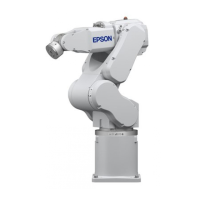
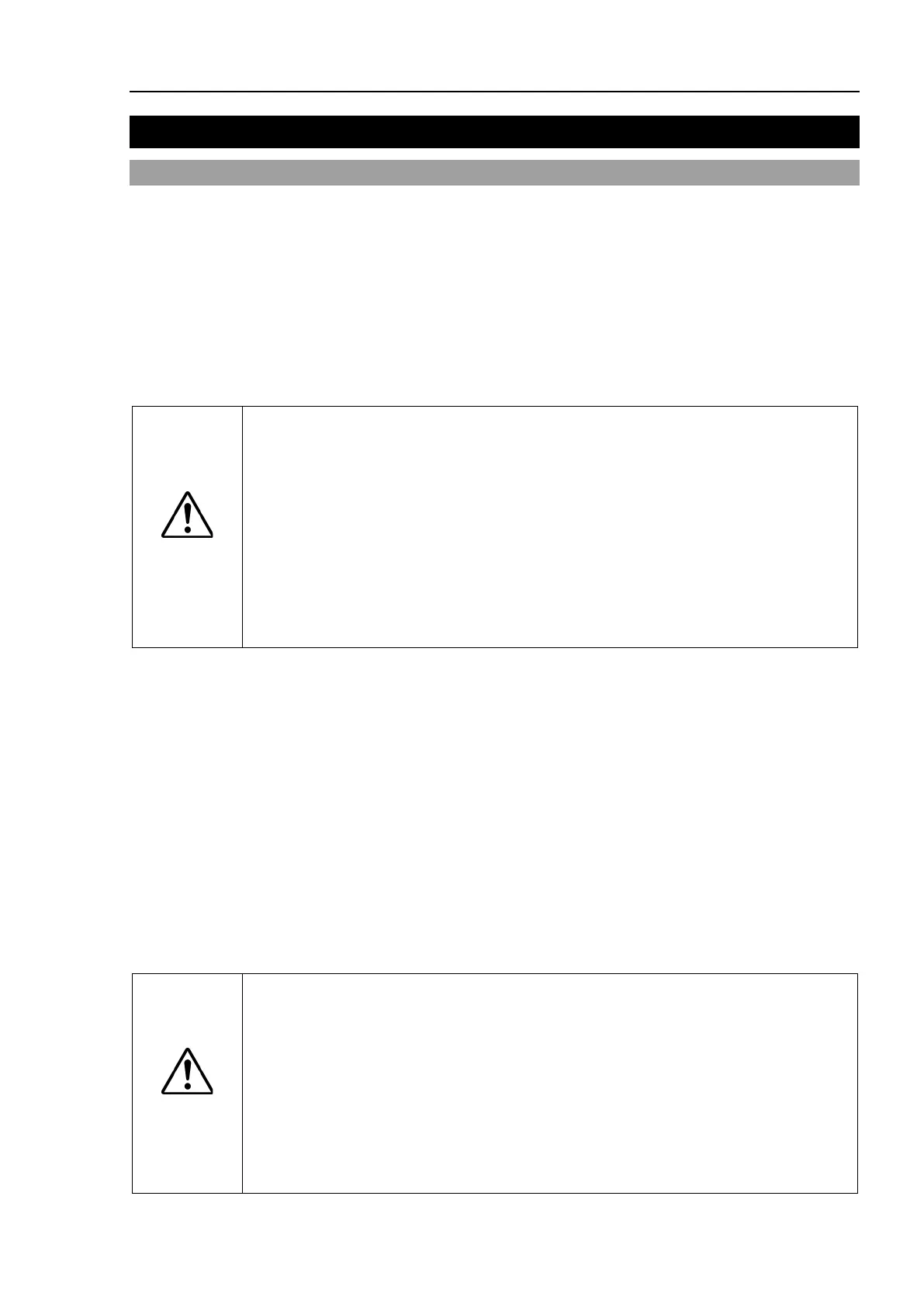